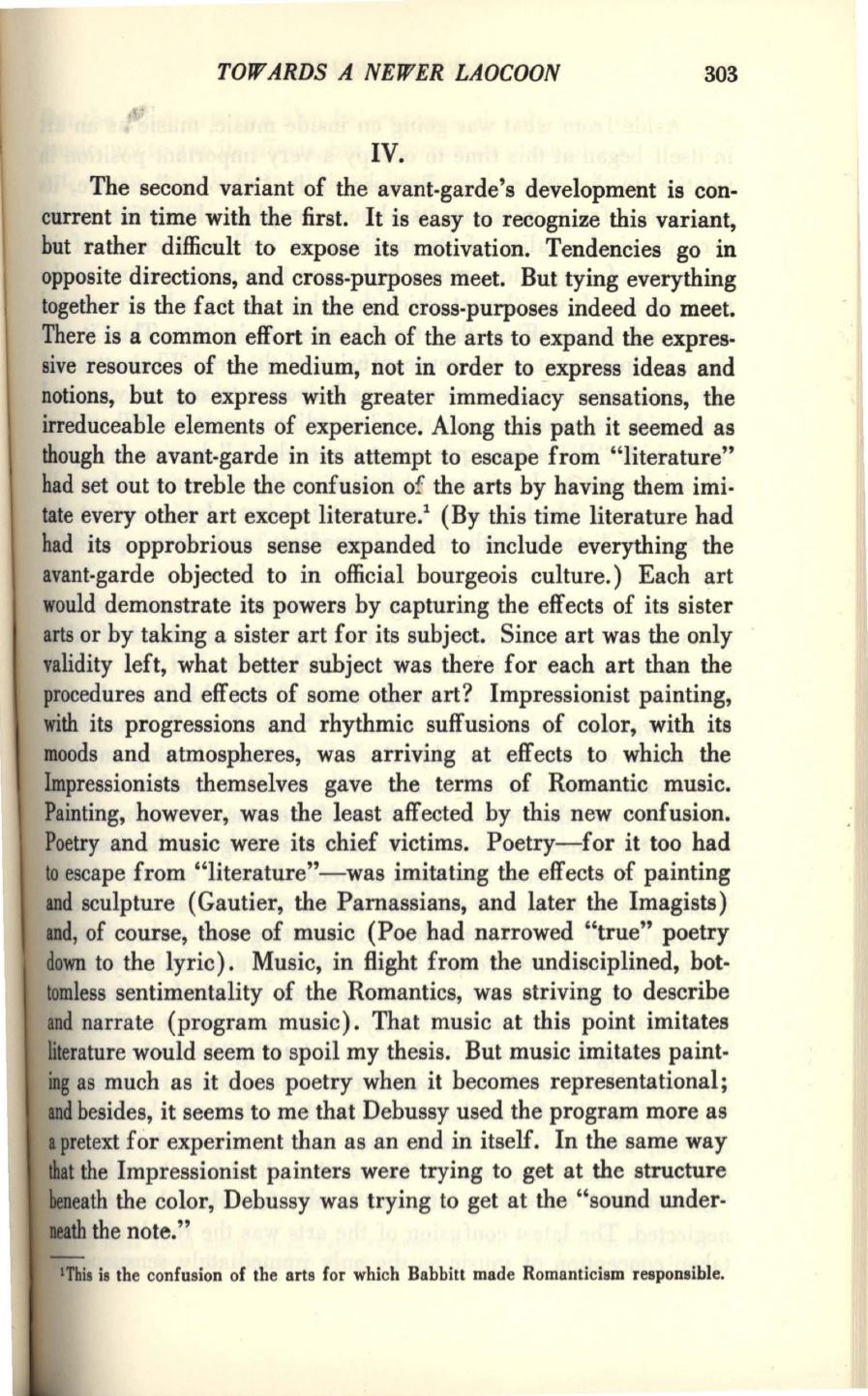
TOWARDS A NEWER LAOCOON
303
IV.
The second variant of the avant-garde's development is con–
current in time with the first. It is easy to recognize this variant,
but rather difficult to expose its motivation. Tendencies go in
opposite directions, and cross-purposes meet. But tying everything
together is the fact that in the end cross-purposes indeed do meet.
There is a common effort in each of the arts to expand the expres–
sive resources of the medium, not in order to express ideas and
notions, but to express with greater immediacy sensations, the
irreduceable elements of experience. Along this path it seemed as
though the avant-garde in its attempt to escape from "literature"
had set out to treble the confusion of the arts by having them imi–
tate every other art except literature.
1
(By this time literature had
had its opprobrious sense expanded to include everything the
avant-garde objected to in official bourgeois culture.) Each art
would demonstrate its powers by capturing the effects of its sister
arts or by taking a sister art for its subject. Since art was the only
validity left, what better subject was there for each art than the
procedures and effects of some other art? Impressionist painting,
with its progressions and rhythmic suffusions of color, with its
moods and atmospheres, was arriving at effects to which the
Impressionists themselves gave the terms of Romantic music.
Painting, however, was the least affected by this new confusion.
Poetry and music were its chief victims. Poetry-for it too had
to escape from "literature"-was imitating the effects of painting
and sculpture (Gautier, the Parnassians, and later the Imagists)
and, of course, those of music (Poe had narrowed "true" poetry
down
to the lyric). Music, in flight from the undisciplined, bot–
tomless sentimentality of the Romantics, was striving to describe
and narrate (program music). That music at this point imitates
literature would seem to spoil my thesis. But music imitates paint–
ing
as much as it does poetry when it becomes representational;
and besides, it seems to me that Debussy used the program more as
apretext for experiment than as an end in itself. In the same way
that the Impressionist painters were trying to get at the structure
beneath the color, Debussy was trying to get at the "sound under–
aeath the note."
1
This is the confusion of the arts for which Babbitt made Romanticism responsible.


